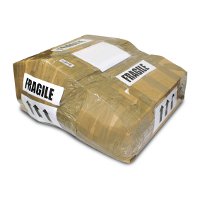Why Do Packages Get Damaged in Transit?
 Postal and courier companies do their best to deliver packages intact, because that’s what clients pay them for, but no one is perfect, and sometimes packages end up being damaged. Why do packages get damaged in transit and is there anything you can do to prevent it?
Postal and courier companies do their best to deliver packages intact, because that’s what clients pay them for, but no one is perfect, and sometimes packages end up being damaged. Why do packages get damaged in transit and is there anything you can do to prevent it?
Poor packaging. Packaging is meant to protect the items you’re shipping from external impact; mailpieces that are not packaged properly are more likely to get damaged while in transit even if the carrier does everything it can to handle them with care.
The most common packaging mistakes made by senders include: choosing a too fragile box; reusing an old box that is too beat up; choosing a box that’s either too big or too small (overpacking and underpacking are equally bad); shipping in an envelope instead of a box in an attempt to save money; using too much or not enough cushioning material; using the wrong kind of cushioning material.
It is very important to look up the carrier’s packing instructions and follow them to a T because otherwise the carrier can deny you compensation in case of damage since your package does not meet the carrier’s guidelines.
Using/not using Fragile stickers. We admit that this reason why packages get damaged in transit looks controversial: damned if you do, damned if you don’t. On the one hand, the whole point of Fragile stickers is to notify the carrier that the package should be handled with more care than normally. On the other hand, some claim there is evidence that packages labeled as fragile can get handled more roughly since putting a Fragile sticker on a package is like waving a red flag in front of a bull.
So what should you do? If you ask us, it’s better to label fragile shipments appropriately because if someones does happen to your package, it will be easier for you to prove that it was not your fault and that you’re entitled to compensation. And don’t forget to add a This Side Up label if your package needs one.
Wrong shipping label placement. The shipping label must be attached to the longest side of the package, which is unsurprisingly called the address side. If the label is placed on the wrong side or worse, bent over the edge of the package, the package will be harder to process automatically, which may result in it being handled more than absolutely necessary.
Traffic accidents. Anyone can get into an accident, so it is not surprising that traffic accidents involving delivery drivers happen from time to time. If the delivery vehicle gets damaged during such an accident, packages can get banged up or even destroyed, depending on the severity of the accident. And that’s what shipping insurance is for!
Climate differences. If you package has to travel across the country or overseas, it is important to understand that it may be affected by drastic climate changes – to be more precise, by a change in humidity levels. To protect your package from the elements and minimize humidity/water damage, you should use water-resistant packaging and make sure your package is tightly sealed.
Improper handling/human error. Everyone is supposed to do their job well, but we are humans, and humans are imperfect. Warehouse workers, delivery drivers, mail carriers, and other postal workers who handle your package throughout its route may have a bad day and drop your package without meaning to or even deliberately. Of course, if this happens, you have every right to file a claim and get compensated.
Naturally, it is impossible to completely prevent parcel damage because some circumstances are beyond your control. What you can do is make sure that your parcel is properly packaged, pick a reliable postal or courier company, and purchase shipping insurance if default insurance coverage is not enough.